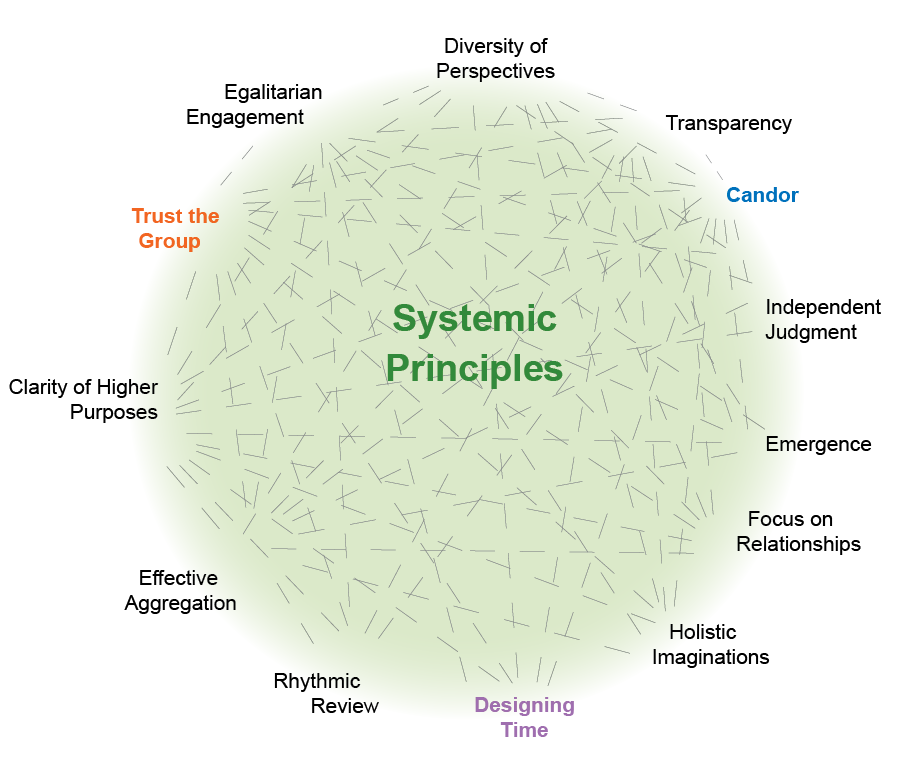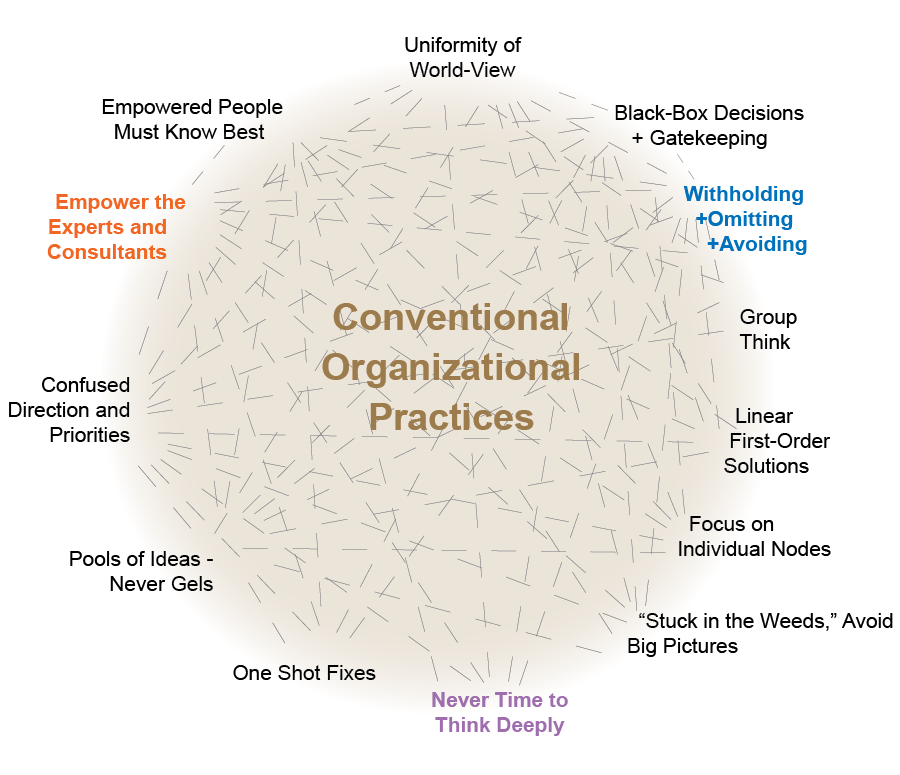Comparing and Contrasting Coherence Maps

Systemic Principles to Navigate Today’s Complex Issues
Why these principles?
Decades of experience tell us that when dealing with complex issues, they are essential for effective outcomes. They build TRUST in the process, among colleagues, and with the leadership. They offer pragmatic practice and hope.
All are inter-dependent and mutually reinforcing.
To omit Transparency in our processes, for example, seriously erodes the capacity of the group to trust the process, their peers, and their leaders. Without transparency, “Shadow Practices” appear as our default. The Strategic Advantage of Systemic Principles in working with complex issues is elaborated in an article by Jane Lorand and Bruce McKenzie, by clicking Read More.

The Shadow Practices of Conventional Organizations
These practices are also inter-dependent and mutually reinforcing.
People in diverse organizations around the world immediately recognize these “Shadow Practices” as business-as-usual. These practices have their own internal consistency and logic. They reflect a deeply-embedded culture of fear, defensiveness, and self-optimization.
Today’s workforce needs and deserves a different culture. No person or well-meaning group can take on all of these default, often-unconscious practices.
WindTunneling is a virtual tool-set that embeds the Systemic Principles and blocks Conventional Practices. It lets a “principled technology” carry the heavy lifting of culture change.
What do we mean by the term, “Complex Issues?”
The short answer is that complex issues are those issues that are messy, chronic and highly uncertain. They have many elements and variables, and many of the variables are beyond our control. In the present, we can’t tell if A is causing B, or if B is causing A….or neither. At best, we may be able to look back and see a pattern of cause/effect….but we have to make decisions in the present. For a comprehensive discussion of the relationship of Complex Issues and Systemic Principles, click on Read More.
We cannot “solve” complex issues: the best we can do is to actively and continuously improve our position.
The shape of leadership that yields the most productive results when we are facing a complex issue is “systemic leadership.” It is very different from hierarchy or from bringing in consultants who purport to “solve” the issue. This set of leadership practices and approaches is built out of three disciplines: chaos and complexity theory; living systems theory; and the theory/practice of tapping the experiential learning of all those involved in the system or organization (collective intelligence).
WindTunneling is specifically designed to support leaders and managers….and their teams….as they arrive at work facing more and more complex issues.
A longer answer is elaborated in an article. (read more)
